by Joe Earp
Someone once said that war was 99% boredom and 1% action. Such were these thoughts when I read the diary of a Beeston Crimean War veteran, William Jowett.
It is the routine and the detail of everyday life of a solider in action, that makes the diary an important historic document and one which should be more worthy to a wider audience.
Who was William Jowett? His name appears on the small but significant Crimean War Memorial in the churchyard of Beeston’s St John the Baptist Church.
The memorial is a tribute to four men of Beeston, who sacrificed their lives in a now much forgotten war, the Crimea.
The marble pillar which stands in the churchyard, is one of only four in the country dedicated to this conflict.
It is probably the most descriptive and informative of its kind, for not only does it list the names of the four ‘forgotten heroes’ but it also tells of the battles they had fought. Names like Inkerman, Balaclava and Alma mean nothing to most people. In the mid 1800s they were household names and even streets and public houses were named after these conflicts.
It is amazing to think that troopers like John Lees and Thomas Toulson of the 17th Lancers took part in the best known Calvary charge in British history, ‘the Charge of the Light Brigade’. Toulson actually survived this epic action, only to die like so many others on the famous wards of the famous Scutari Hospital. The hospital made famous by the likes of Florence Nightingale, who probably herself nursed the man from Beeston, along with thousands of other soldiers.
William Jowett died on the 11th October 1856 and was buried on 13th October in the churchyard of Stoke Damerel near Plymouth, with full military honours. The people of Beeston used the money collected after his death to raise the monument that now stands in memory of William and the three other men from Beeston who died in the Crimean War. It is said that the memorial marks the perpetuate memory of those who left this village to serve their country and died in the discharge of their duty in the Crimean War.
The memorial reads:
‘This monument was erected by the inhabitants of Beeston to perpetuate the memory of those who left this village to serve their country and died in the discharge of their duty in the Crimean War.
Sergeant W Jowett, Royal Fusiliers, enlisted January 8th 1847, fought at Alma, Inkerman, twice at Redan Battery where he was struck by a shell Sept 8th 1855 which necessitated the amputation of the right leg and died from its effects at Plymouth Hospital 11th October 1856. Aged 26 years.
Private John Lees 17th Lancers, enlisted April 26th 1846, was slain in the cavalry charge at Balaclava October 23rd 1854. Aged 30 years.
Private Thomas Toulson 17th Lancers, enlisted April 26th 1846, was in the charge at Balaclava and died of diarrhoea at Scutari Hospital December 15th 1854. Aged 32 years.
Private Joseph Oldham 35th Regiment, enlisted September 1840 fought at Alma and Inkerman, and died of diarrhoea at Scutari Hospital, December 17th 1854. Aged 31 years.
‘No farther seek their merits to disclose or drain their frailties from their dread abode’. DA Chall Beeston June 1st 1857′.
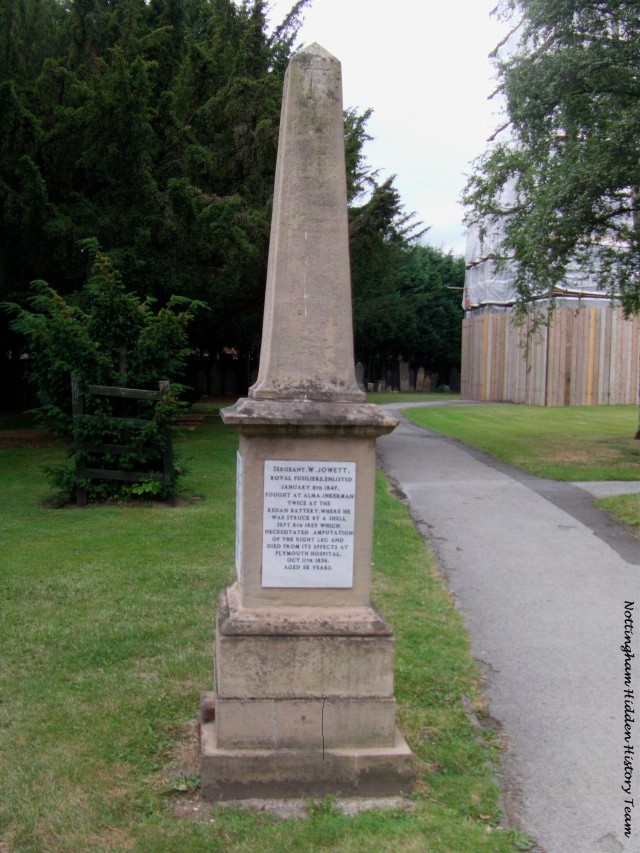
Credit: Nottingham Hidden History Team
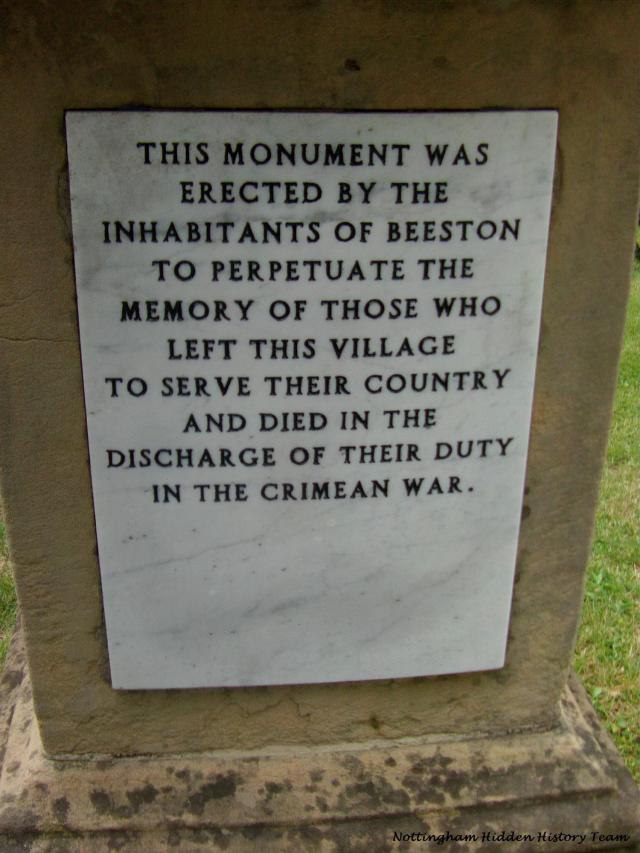
Credit: Nottingham Hidden History Team
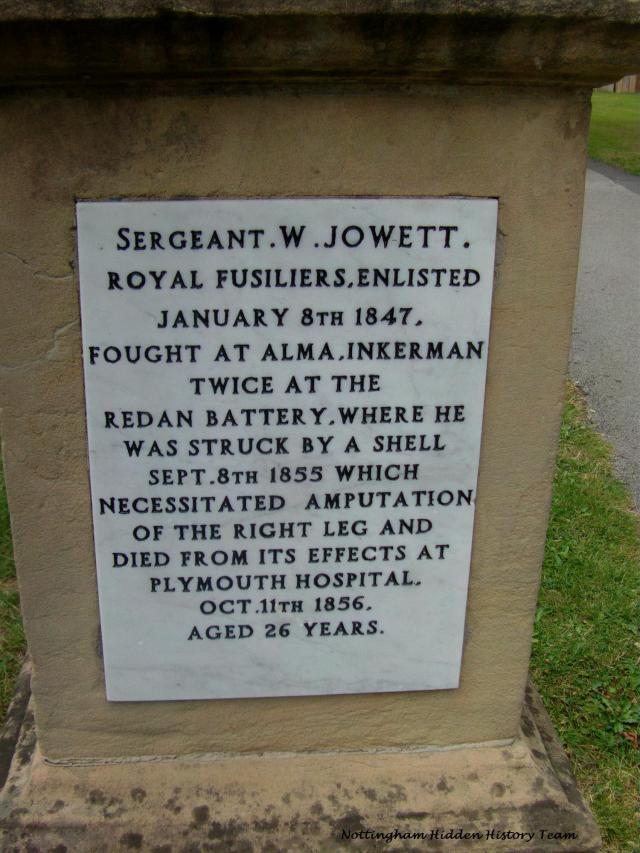
Credit: Nottingham Hidden History Team
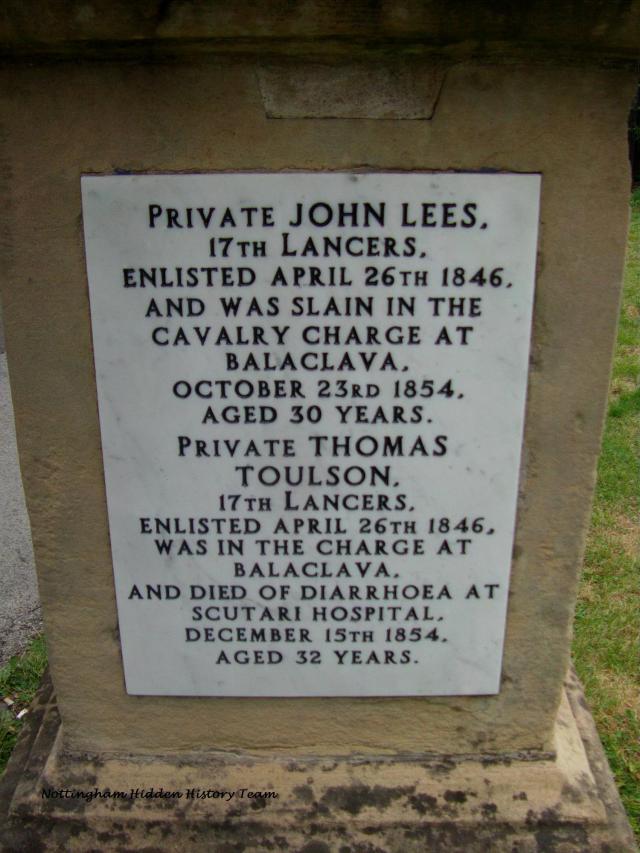
Credit: Nottingham Hidden History Team
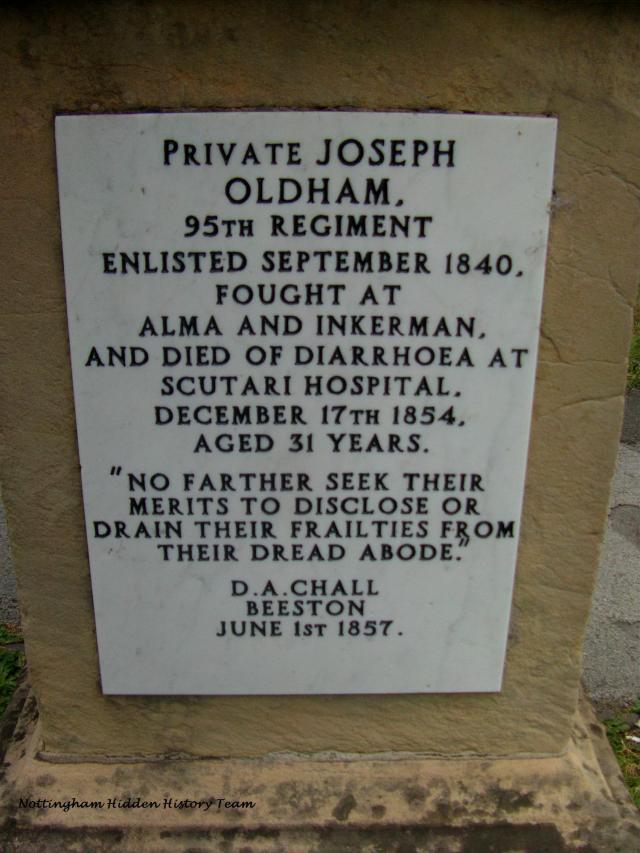
Credit: Nottingham Hidden History Team

